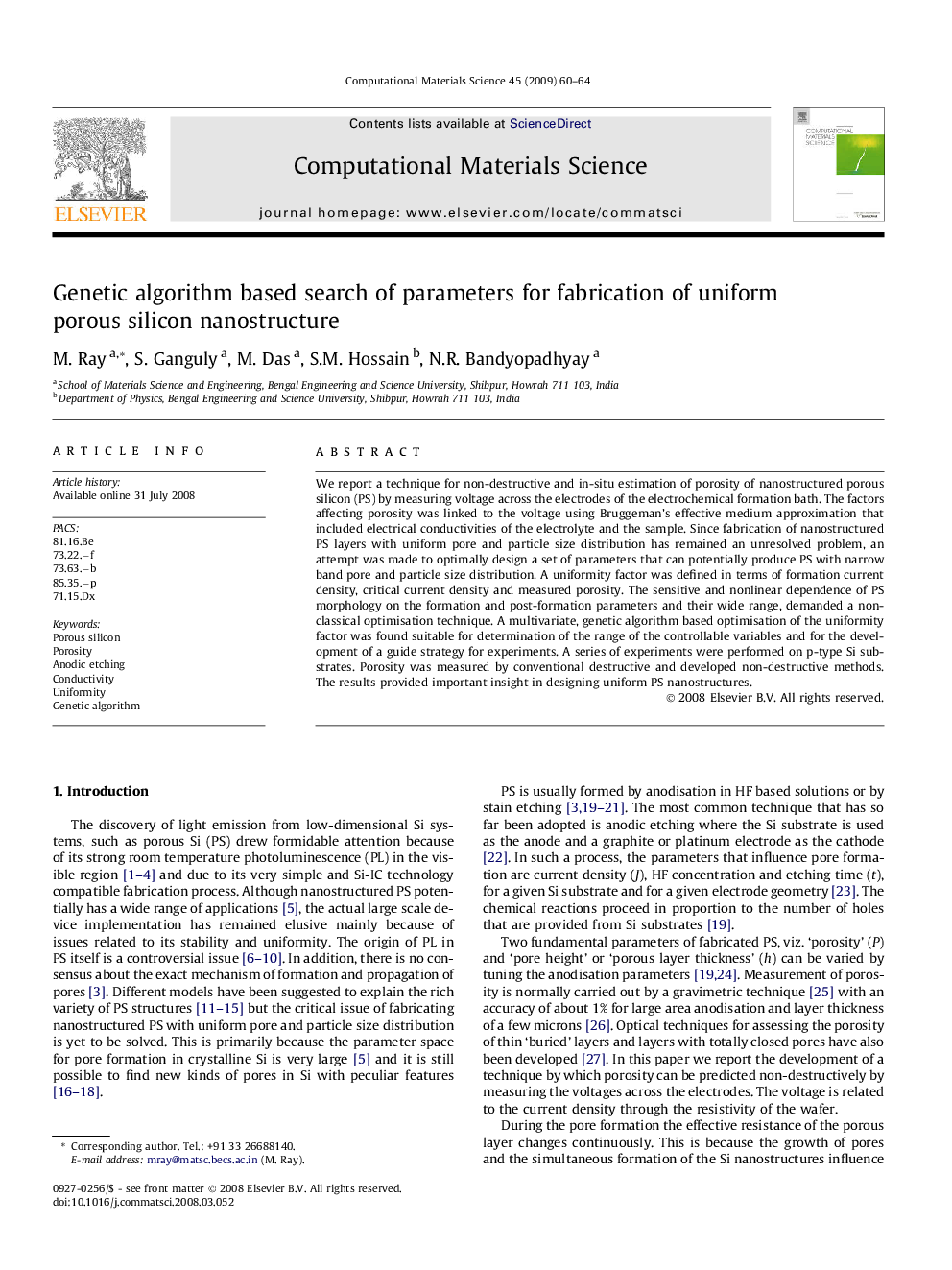| Article ID | Journal | Published Year | Pages | File Type |
|---|---|---|---|---|
| 1563690 | Computational Materials Science | 2009 | 5 Pages |
We report a technique for non-destructive and in-situ estimation of porosity of nanostructured porous silicon (PS) by measuring voltage across the electrodes of the electrochemical formation bath. The factors affecting porosity was linked to the voltage using Bruggeman’s effective medium approximation that included electrical conductivities of the electrolyte and the sample. Since fabrication of nanostructured PS layers with uniform pore and particle size distribution has remained an unresolved problem, an attempt was made to optimally design a set of parameters that can potentially produce PS with narrow band pore and particle size distribution. A uniformity factor was defined in terms of formation current density, critical current density and measured porosity. The sensitive and nonlinear dependence of PS morphology on the formation and post-formation parameters and their wide range, demanded a non-classical optimisation technique. A multivariate, genetic algorithm based optimisation of the uniformity factor was found suitable for determination of the range of the controllable variables and for the development of a guide strategy for experiments. A series of experiments were performed on p-type Si substrates. Porosity was measured by conventional destructive and developed non-destructive methods. The results provided important insight in designing uniform PS nanostructures.
